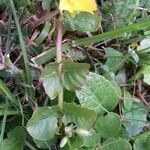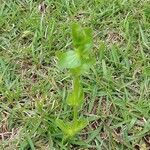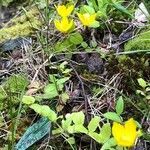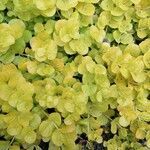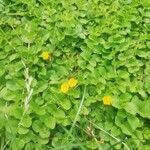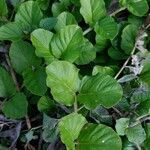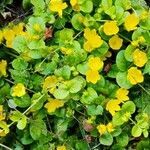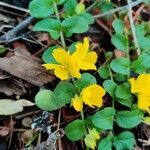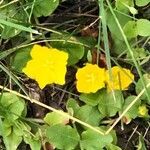Glabrous, evergreen herb with creeping aerial stems, rooting at nodes. Lvs opposite, shortly petiolate. Lamina 1-2.5 × 1-2.5 cm, orbicular to subreniform, glandular-punctate, entire; base rounded to subcordate; apex rounded or shallowly emarginate. Fls solitary in the axils; bracts 0. Pedicels 1.5-2 cm long, glabrous. Calyx 7-8 mm long, glandular-punctate; lobes ovate or triangular-ovate, cordate at base, short-acuminate at apex. Corolla limb 2-2.5 cm diam., yellow, minutely glandular-ciliate; lobes c. 1.5 cm long, ± obovate, rounded. Stamens 4-5 mm long; filaments united at base, glandular-scaly. Style almost = or slightly > stamens, scarcely glandular-scaly. Capsule not seen.
Creeping, often forming mats; lvs opposite, punctate, short-petioled, broadly quadrate to subrotund, 1–2.5 cm; fls solitary in the axils, the pedicels about equaling the lvs; cal-lobes foliaceous, triangular-ovate, 8 mm; cor-lobes 10–15 mm, dotted with dark red; 2n=32, 36, 43, 45. Native of Europe, escaped from cult. into moist places nearly throughout our range, often weedy. June–Aug.
A herb that keeps growing from year to year. The stems are creeping. They can be 60 cm long. The leaves are opposite and have short stalks. The leaf blade is oval and 1.5-2.5 cm long.
